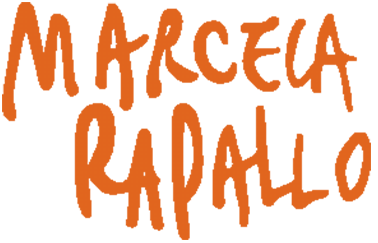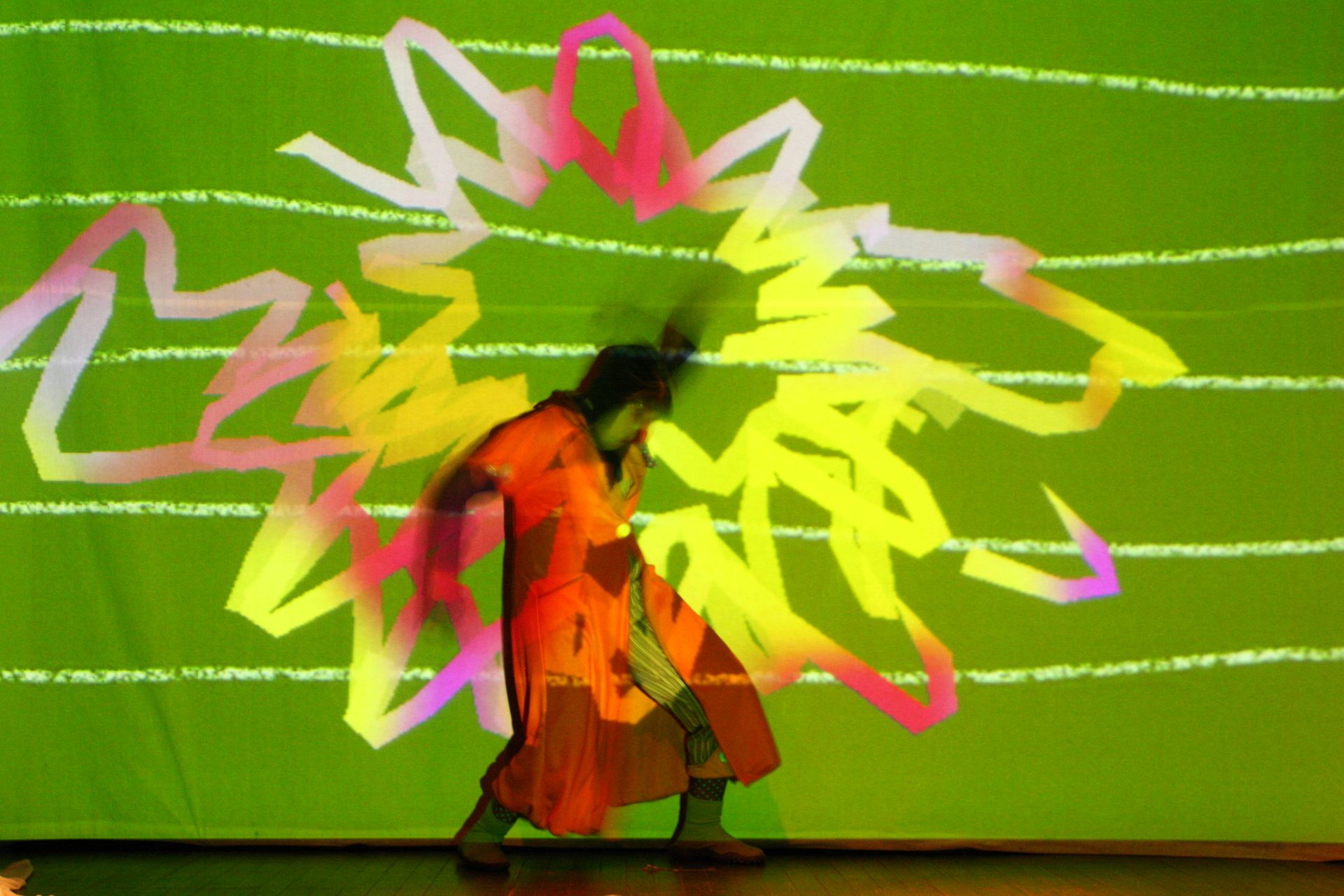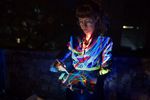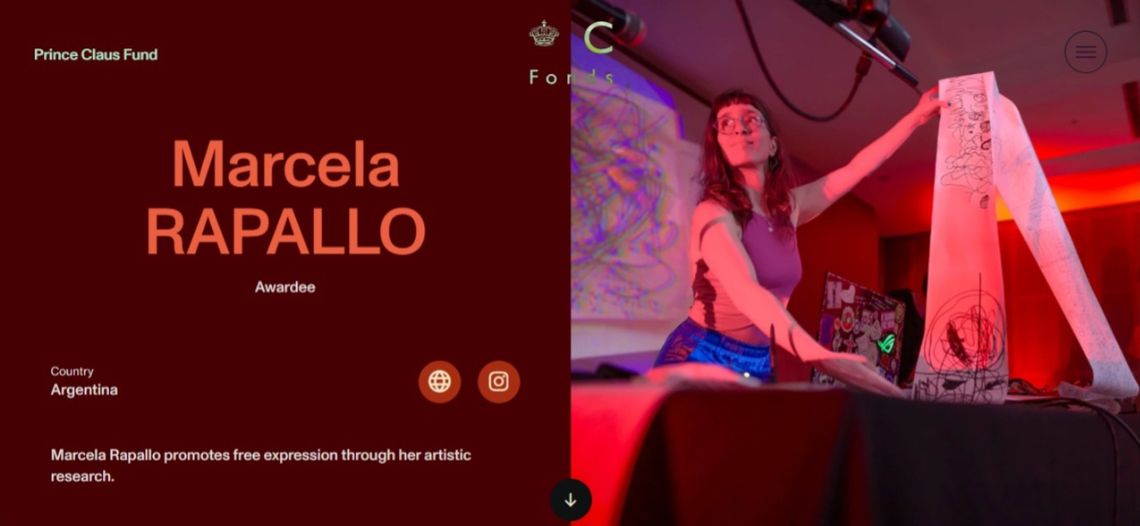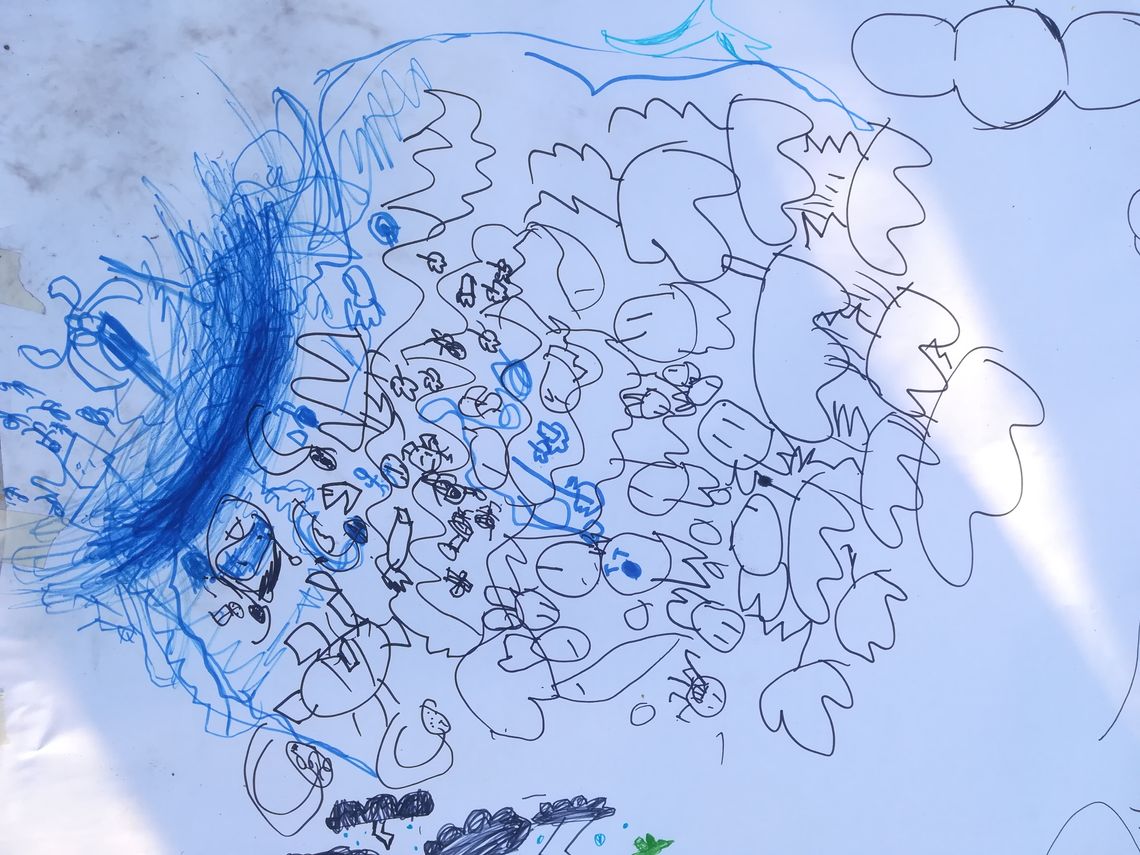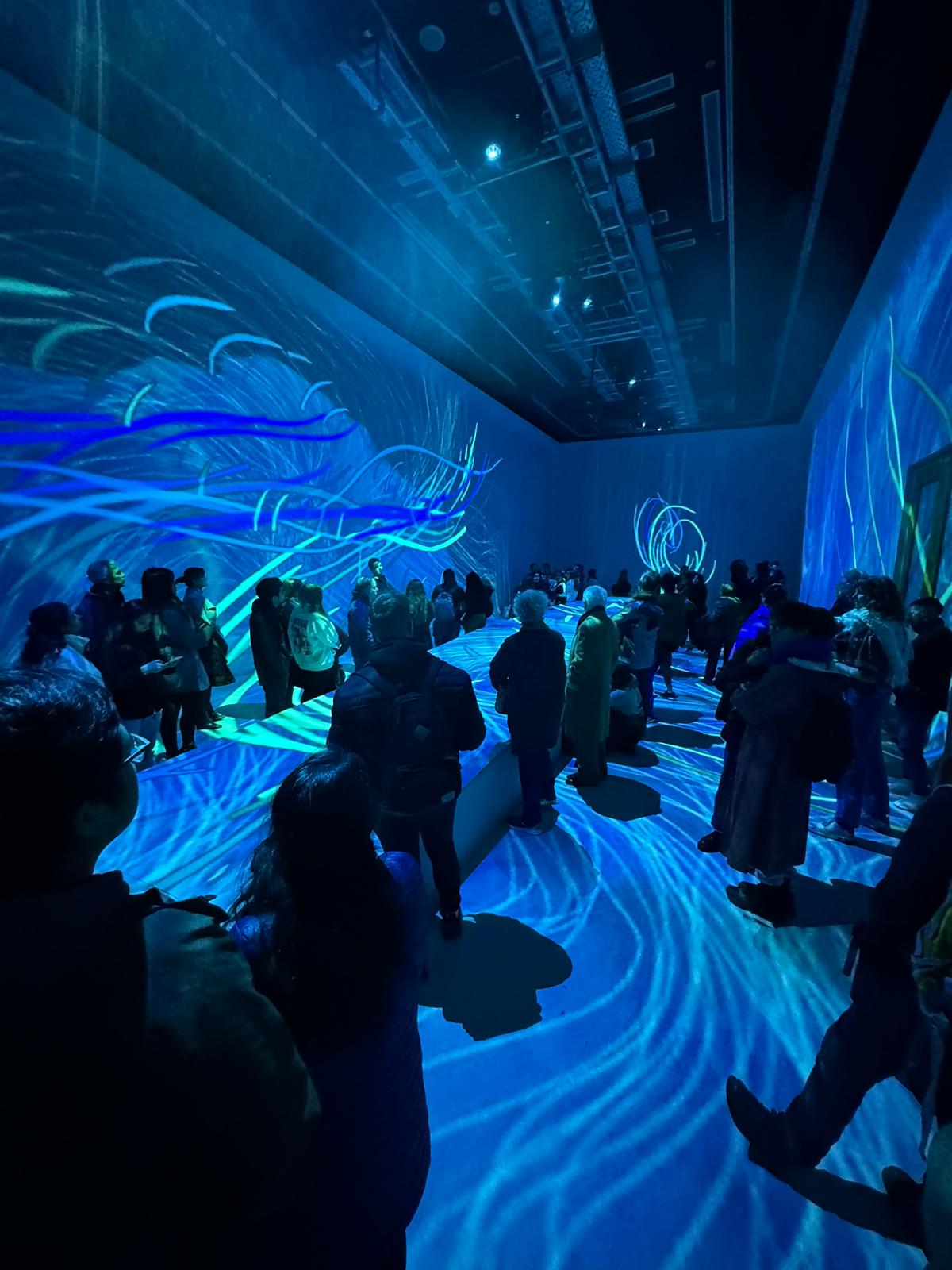The research on real-time animated digital drawing, between Marcela Rapallo and Andrés Colubri, began in 2007, with the development of the live drawing mode in the free software platform Moldeo, created by Fabricio Costa. This process took place in dialogue with performing artists from different disciplines.
Moldeo is an open source platform that enables the creation of interactive environments with video elements, animation and digital effects in real time. The introduction of the drawing tool in Moldeo and the development of the first artistic and educational practices were based on common motivations and objectives, such as the possibility of working live with drawing in a way similar to playing a musical instrument, and performing it live in dialogue with other artists.
As part of this research, the theatrical works Cuentos Animados and Viene nieve (a work with the Colombian playwright Enrique Lozano) were produced, both premiered in 2008. During those first years, real-time drawing performances were also carried out with musicians, such as the group Buque Factoría, and projections on building facades, such as the work Calle en el Centro Cultural San Martín (Festival Cultura y Media, 2009), and the intervention on the building of the ex-Padelai, former Patronato de la Infancia (CCEBA, Centro cultural de España en Buenos Aires, 2011).
This work with technological tools is preceded by Marcela Rapallo's research with live and collective drawing that begins with the experience of the group Andrógina/o, together with Ana Gendrot, which since 2002 carried out performances of drawing and performative painting in the cycle called "Diálogos visuales" (Visual Dialogues). These performances involved the participation of the public, the intervention of the urban space and the live performance with musicians. In this experience, the search for a joint work between artists led to the invention of codes, methods and visual scripts, which resulted in the expressive need to make the display of live processes the axis of the work. This motivation generated a method, which became an axis since the live event became more important than the finished work.
Work on the live drawing mode in Moldeo continued with the development of Andiamo. Andrés Colubri developed the code that later became Andiamo during his master's project (2009) in media arts at the University of California, Los Angeles.
A first theorization of this process is reflected in the Thesis work Dibujar un Aleph, presented by Marcela Rapallo for the university equivalency at the Universidad Nacional de las Artes (2014). In the Thesis she develops a work project, describes the process of language construction, and makes a national and international review of historical and contemporary references.
Within the framework of this Thesis, the blog "Dibujar instantáneas" (Drawing snapshots) was made, which contains the first live drawing research with Moldeo Software (2007-2013):
